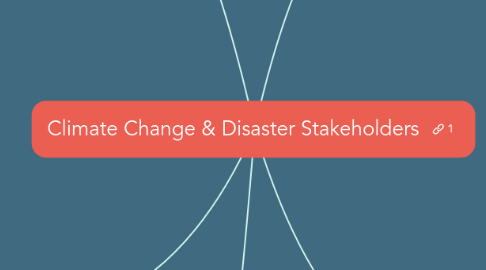Climate Change & Disaster Stakeholders
par Stakeholder Map


1. Non-governmental Organisations - NGOs
1.1. Hospitals
1.2. Health clinics
1.3. Extension services
1.4. Environmental advocacy groups
1.5. Public Health advocacy groups
1.6. Faith-based organizations
1.7. Universities and Community colleges
1.8. Community Centers
1.9. Emergency Response Volunteers
1.10. Community-spirited businesses
1.11. Others
2. Vulnerable Populations
2.1. Healthcare providers
2.2. Assisted living
2.2.1. nursing homes
2.2.2. sheltered housing
2.3. Early childhood centers
2.4. Food banks
2.5. Safety-net service providers
2.6. Low-income neighborhoods
2.7. Communities of color
2.8. Immigrant communities
2.9. Outdoor work groups
2.10. Neighborhoods with steep slopes
2.11. Neighborhoods in floodplains
2.12. Neighborhoods on the coast
2.13. Private well users
2.13.1. Private bore holes
2.14. Travelling communities
2.15. Tribes
2.16. Rural Networks
2.17. Networks serving people with disabilities
2.18. Schools
2.19. Healthcare Stakeholders
3. Other Stakeholder Lists
4. State and Local government
4.1. Environmental Health
4.2. Public Health Prepardness
4.3. Communicable Disease
4.4. Public Health Surveillance
4.5. Chronic Disease Prevention
4.6. Maternal and Child Health
4.7. Mental Health
4.8. Minority Health
4.9. Food Protection
4.10. Planning and Policy Departments
4.11. Communications Department
5. Partner Agencies
5.1. Water services
5.2. Emergency Management e.g. FEMA
5.3. Community Development
5.3.1. Planning
5.3.2. Zoning
5.4. Sheriff's Office
5.5. Transportation
5.6. Flood management
5.7. Aging and disability agencies
5.8. Environmental
5.8.1. Natural resources
5.8.2. Forestry
